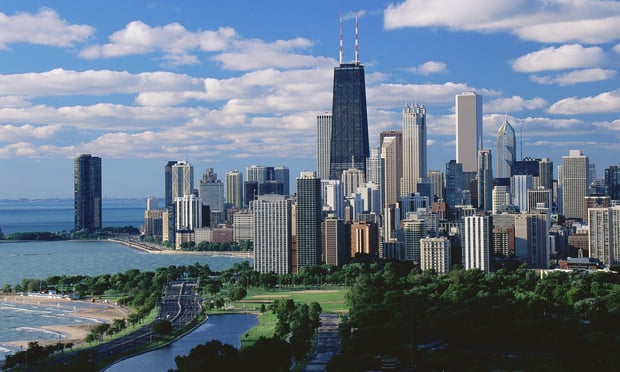INDIANAPOLIS—The Indianapolis suburbs have dominated the regional office market for many years. But the latest data show that the balance between the CBD and outlying areas has changed. Like many cities throughout the Midwest, the downtown has begun attracting both start-up and established tech firms, along with thousands of new millennial residents. As a result, among the region's submarkets, it was the CBD that posted the highest level of net absorption for the year.
Tenants new to the CBD leased 170,000 square feet of space during 2016, according to a year-end report from JLL, or more than the past two years combined. And many of these firm were transplants from the suburbs. Flaherty & Collins Properties, for example, moved from Keystone to 24,503 square feet in the Regions Tower, and Teradata Corp. exchanged a suburban office for 20,454 square feet in BMO Plaza. Positive net absorption in the CBD was 104.548 square feet for the year, beating Keystone's 71,701 square feet, and way ahead of the Northwest and Northeast submarkets, which saw negative absorption of 65,495, and 183,261 square feet, respectively.
“Companies are now attracted to the CBD,” Adam Broderick, managing director, JLL, tells GlobeSt.com. In fact, this is the first time in fifteen years the downtown has seen more than 100,000 square feet of positive net absorption during a calendar year.
Recommended For You
Want to continue reading?
Become a Free ALM Digital Reader.
Once you are an ALM Digital Member, you’ll receive:
- Breaking commercial real estate news and analysis, on-site and via our newsletters and custom alerts
- Educational webcasts, white papers, and ebooks from industry thought leaders
- Critical coverage of the property casualty insurance and financial advisory markets on our other ALM sites, PropertyCasualty360 and ThinkAdvisor
Already have an account? Sign In Now
*May exclude premium content© 2025 ALM Global, LLC, All Rights Reserved. Request academic re-use from www.copyright.com. All other uses, submit a request to [email protected]. For more information visit Asset & Logo Licensing.









